Home / EQ Academy / Resources / A Comprehensive Guide to Vial Adaptors
Home / EQ Academy / Resources / A Comprehensive Guide to Vial Adaptors
Vial adaptors are specialized medical devices designed for the safe and efficient transfer of drugs between vials and syringes. They provide a secure connection, minimizing the risk of needlestick injuries and maintain a closed environment to prevent leakage. Engineered to fit standard vial sizes they facilitate the precise dosage of medication without significant waste. Many adaptors’ improved usability contributes to streamlined medication preparation processes in healthcare settings, enhancing patient safety by reducing contamination risks. By integrating these devices, healthcare facilities can achieve a higher standard of drug administration efficiency and safety.
Ensuring the safe and efficient transfer of drugs should be the top priority for healthcare facilities, especially when dealing with hazardous medications. These substances pose significant risks to healthcare professionals through exposure during preparation and administration. The use of vial adaptors eliminates air exposure and direct contact with hazardous drugs, reducing the risk of occupational hazards such as skin irritation or more severe health complications, including higher cancer risks, miscarriages, and chromosomal abnormalities. Technology designed for safe drug transfer creates a safer working environment for healthcare staff while ensuring optimal patient outcomes.
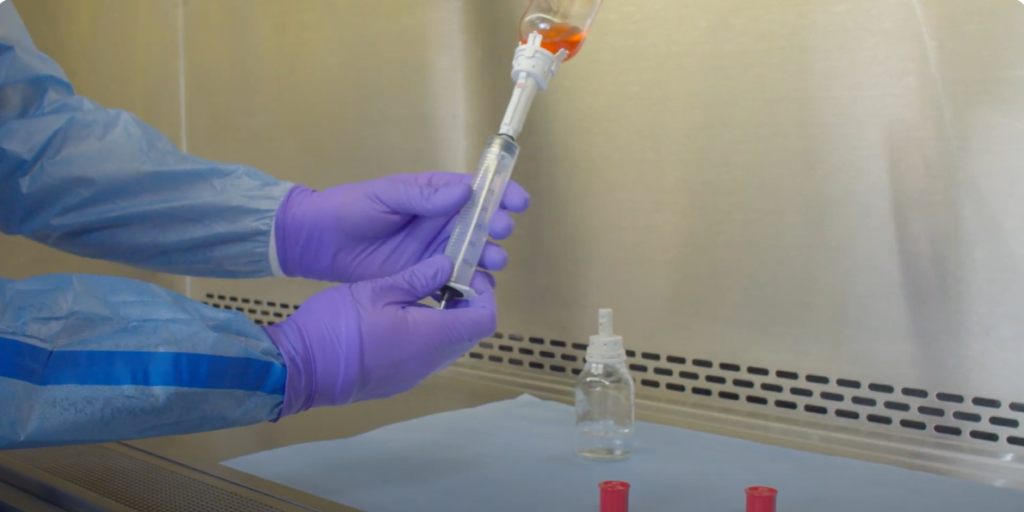
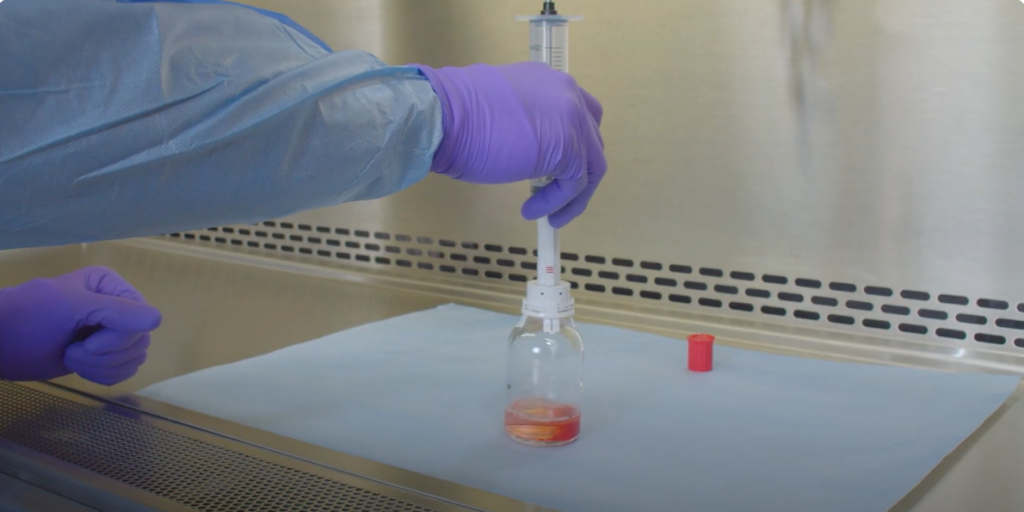
Vial adaptors come in various designs and mechanisms, tailored to meet the specific needs of diverse medical settings and applications. The most common types include:
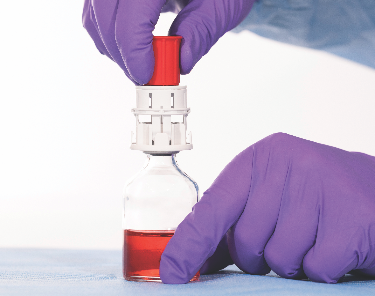

These adaptors provide a a safe and contamination-free vial access port to the Syringe Unit. EQUASHIELDs design features an elastomeric membrane to prevent microbial ingress, remaining drug residue-free for up to 10 repeated connections in 7 days. The unique closed internal equalization system makes it sleek and easy to use.
Mechanical barrier that employs a balloon mechanism to ensure air pressure equalization. These systems necessitate an additional step of injecting air into the vial prior to extracting the contents.
Designed with a built-in air filter, these adaptors allow for the safe equalization of pressure inside the vial without contaminating the drug. They reduce hazardous drug vapors, aerosols and liquids from escaping the drug vial while preventing contaminants from entering the vial.
These adaptors utilize a secure locking mechanism that connects to syringes, ensuring a tight and secure fit. These are usually needle free but not a closed system.
Engineered to fit a wide range of vial sizes, universal adaptors offer flexibility and convenience for healthcare professionals, eliminating the need for multiple adaptor sizes. These lack a proper seal, meaning they are open systems.
Each of these vial adaptor designs incorporates specific features aimed at improving the safety, efficiency, and accuracy of drug transfer procedures. By understanding the unique characteristics and mechanisms of these adaptors, healthcare providers can select the most appropriate device for their specific requirements, ultimately enhancing patient care and safety.
The selection of the appropriate vial adaptor is influenced by its application and compatibility with both the medication and the syringe type. In high-risk environments, such as chemotherapy drug preparation, Closed System Vial Adaptors are required to minimize exposure to hazardous drugs. These systems are compatible with chemotherapy protocols, providing a safe transfer mechanism that reduces the risk of contamination and exposure.
Each adaptor type’s design considerations reflect the requirements of unique medical environments, medication types, and administration methods. By selecting the appropriate vial adaptor based on its specific application and compatibility, healthcare facilities streamline the medication preparation process while prioritizing patient and staff safety.
The selection of the appropriate vial adaptor is influenced by its application and compatibility with both the medication and the syringe type. In high-risk environments, such as chemotherapy drug preparation, Closed System Vial Adaptors are required to minimize exposure to hazardous drugs. These systems are compatible with chemotherapy protocols, providing a safe transfer mechanism that reduces the risk of contamination and exposure.
Each adaptor type’s design considerations reflect the requirements of unique medical environments, medication types, and administration methods. By selecting the appropriate vial adaptor based on its specific application and compatibility, healthcare facilities streamline the medication preparation process while prioritizing patient and staff safety.
Vial adaptors significantly contribute to the sterility of medications, a crucial factor in ensuring their efficacy and safety for patient administration. By providing a sealed environment from the point of drug transfer to administration, these devices mitigate risks associated with external and microbial contamination. Maintaining aseptic technique during the drug transfer process is paramount in preventing healthcare-associated infections.
The EQUASHIELD vial adaptor is engineered with a elastomeric membrane. This serves a dual purpose: to prevent microbial ingress and ensure that the medication remains free from microbial contamination for up to 10 connections in 7 days. This feature is particularly beneficial for expensive drugs where multiple connections and disconnections save time and money.
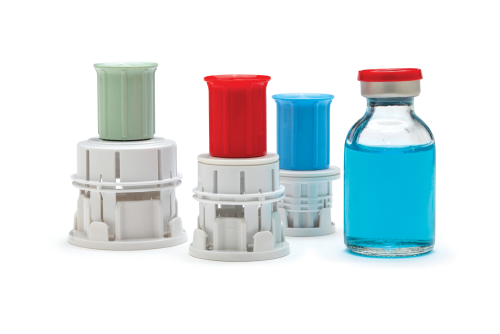
Vial adaptors focus on minimizing the user’s direct contact with the medication. Closed System Vial Adaptors are integral in achieving this objective, as they seal the path between the drug vial and the syringe, thereby significantly lowering the risk of internal and external contamination. This sealed mechanism is instrumental in environments dealing with highly potent or hazardous medications, where contamination can have severe repercussions.
Drug wastage not only represents a financial loss for healthcare facilities but contributes to environmental harm. This can potentially (based on local legislation) allow you to extend the beyond use date to save money by reusing the vial up to 10 times in 7 days.
Vial adaptors are indispensable tools in a variety of medical settings, each with unique needs and challenges. In hospitals, they are used for reconstitution and administration of medications in various departments ranging from oncology to anesthesia. Long-term care facilities utilize vial adaptors for medication preparation and administration, while home care providers may use them for safe and accurate drug transfer. Pharmacists employ vial adaptors during preparation to maintain sterile conditions while compounding. Research laboratories use vial adaptors for safe handling and transfer of hazardous substances. The versatility of vial adaptors make them an essential component in various healthcare applications, promoting consistent efficiency, safety, and accuracy across different medical environments.
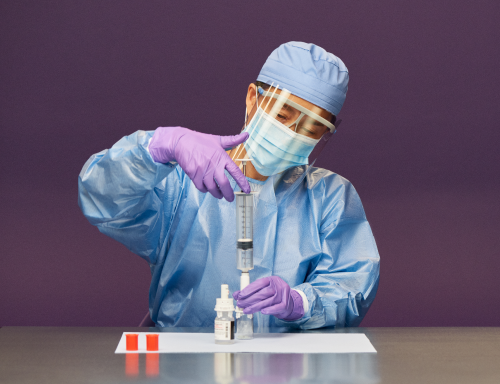
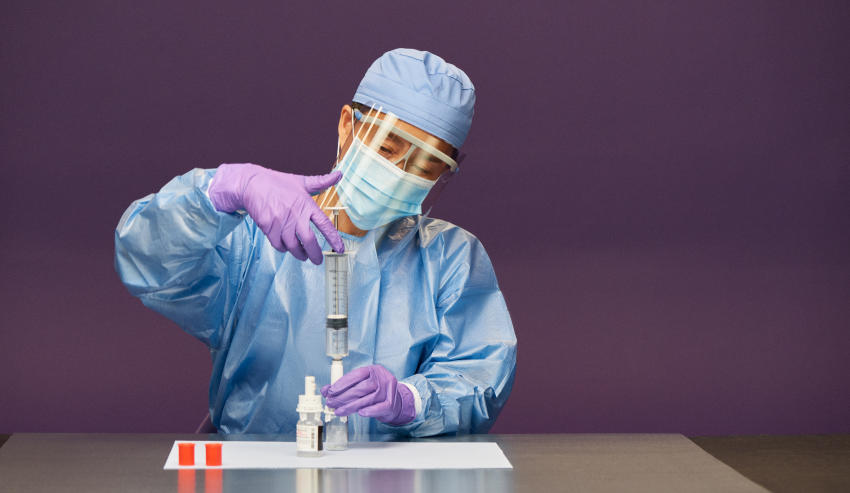
The handling and preparation of chemotherapy drugs necessitates stringent safety measures to protect healthcare professionals from exposure to cytotoxic agents. Vial adaptors designed for closed system drug transfer devices (CSTDs) are critical in this context, ensuring that these potent medications are prepared and transferred in a manner that mitigates exposure risks.
In situations where medications are stored in multi-dose vials, maintaining sterility across multiple uses is paramount. Vial adaptors that provide a sterile barrier against microbial ingress play a crucial role in ensuring that each dose drawn from these vials remains uncontaminated, thereby extending the vial’s safe use period.
Vial adaptors are engineered to ensure safe and efficient drug transfer from vials to syringes. Their design incorporates several key components and features, each serving a critical function in the process:
The EQUASHIELD vial adaptor proprietary design features an elastomeric membrane that self-seals following penetration by a syringe needle. This component plays a vital role in preserving the drug’s sterility by preventing microbial contamination and has the added benefit of allowing multiple withdrawals.
The connection point between the vial adaptor and syringe is a critical element. It must create an airtight seal to prevent leakage, and its design should ensure compatibility with various syringe types.
Some vial adaptors are equipped with air filters that allow for the equalization of pressure within the vial during medication withdrawal. This prevents the formation of vacuum pressures, which could hinder the smooth transfer of the medication.
A protective cap covers the access point until the moment of use, preserving the sterility of the elastomeric membrane. This cap is removed just before the syringe or cannula is introduced.
The body of the vial adaptor is designed to snap onto the vial’s neck securely, ensuring a stable and reliable connection. This housing is typically made from durable materials to withstand the pressures of medication transfer.
Vial adaptors have a built-in needle for easy and safe withdrawal of the medication that eliminates the risk of accidental needlesticks. The placement of the needle is crucial to the optimal withdrawal of the drugs.
EQUASHIELD engineered the needle placement to enable healthcare professionals to withdraw of the complete dosage with negligible residue. Our adaptors also feature a proprietary, built-in system to ensure constant equilibrium. To offset the pressure differential during withdrawal, the short needle draws medication out of the vial while the air needle replaces the liquid with an equal amount of air to maintain equilibrium. The sterile air is automatically drawn from the syringe’s sealed air chamber and injected into the vial. During reconstitution of lyophilized powder, the process is reversed.
Vial adaptors play a critical role in ensuring aseptic drug transfer safety and treatment efficacy. Certain models are designed to preserve drug sterility from the moment they exit the vial until they are administered to the patient. A closed system vial adaptor will ensure an airtight seal between the vial adaptor and the syringe. This means it safeguards against environmental pollutants infiltrating the medication during transfer and prevents any leakage of the medication.
Selecting vial adaptors requires prioritizing compatibility with diverse drug formulations to ensure seamless integration. Drugs come in different viscosities, and some contain delicate compounds that could be affected by the materials used in the adaptor. To address these challenges, manufacturers produce adaptors made from inert materials that do not react with medications, thereby ensuring that the drug’s integrity is maintained throughout the transfer process. Adaptors are tested for compatibility with a wide range of drug formulations to verify that they can handle the specific characteristics of each type of medication, from highly viscous solutions to those containing sensitive biological compounds.
The EQUASHIELD vial adaptor is crafted from high-quality materials such as polypropylene, silicone, polyisoprene, and incorporates a hydrophobic barrier, all of which adhere to USP class IV standards. This design ensures compatibility with chemotherapy compounding and administration processes. Additionally, it is free from DEHP, Latex, and BPA, making it a safe choice for use with medications like Busulfan, Etoposide, Paclitaxel, and Treanda. EQUASHIELD is the only brand compatible with all cytotoxic medications, Blomycin included.
Sophisticated designs incorporate features that can efficiently manage a wide variety of viscosities and volumes thereby enhancing the versatility of these devices. For highly viscous drugs, adaptors may feature wider lumen sizes to facilitate easier, more efficient transfer, reducing the force required by healthcare professionals during medication preparation.
Some systems are designed to handle these challenges in a more efficient manner based on their engineering designs. The EQUASHIELD vial adaptors facilitate the handling of drugs of all viscosities, thanks to their ability to equalize pressure and pump simultaneously.
Preventing needle-stick injuries is a crucial safety concern in medical environments. Vial adaptors, especially those designed for closed-system drug transfer devices (CSTDs), play a significant role in minimizing these risks. By providing a sealed environment for medication transfer, these adaptors eliminate the need for direct needle contact with the vial stopper, drastically reducing the chance of needle-stick injuries.
The criteria for assessing the reliability and ease of use of vial adaptors hinges on their ability to offer a straightforward, ergonomic, and efficient solution for medication transfer.
Ergonomic design that is designed with the user in mind, features like a comfortable grip or contours that fit naturally in the healthcare professional’s hand, greatly enhance the efficiency of drug transfer procedures. Devices that can be applied with a simple push-on motion are generally preferred over those requiring twisting or the use of additional tools.
The principle of simplicity extends to the number of steps required to apply the adaptor. Every extra step, including inflating a balloon or using an applicator, not only consumes time but also increases the chances of error or contamination. Adaptors that are easy to apply, are highly valued for their contribution to a seamless medication preparation process.
For dependable results, it is essential that the healthcare provider uses the product correctly. Choosing a company that provides training and technical manuals for its users minimizes the risk of human error, improves efficiency, and ensures the vial adaptor functions optimally.
EQUASHIELD offers a straightforward snap-on process, eliminating the need for additional steps such as inflating a balloon or using external applicators. Furthermore, we offer free training and provide downloadable technical guides to assist healthcare teams in preparation.
To ensure consistent drug delivery and minimize the potential loss of medication due to priming volumes or “dead space” in the vial, several testing methods are employed. One essential approach is the volume displacement test, which measures the amount of medication that remains in the adaptor and syringe after transfer. Another method of testing involves gravimetric analysis, which entails weighing the medication before and after the transfer process. This approach offers a precise evaluation of the quantity of the drug transferred compared to what remains.
The landscape of drug transfer in healthcare settings is marked by varied techniques, each with its strengths and limitations. Traditional methods, such as the use of standard needles and syringes without safety features, have long been the norm. These methods pose significant risks, including needle-stick injuries and potential exposure to hazardous drugs. In contrast, vial adaptors, especially those designed to work together with closed system drug transfer devices (CSTDs), mitigate these risks.
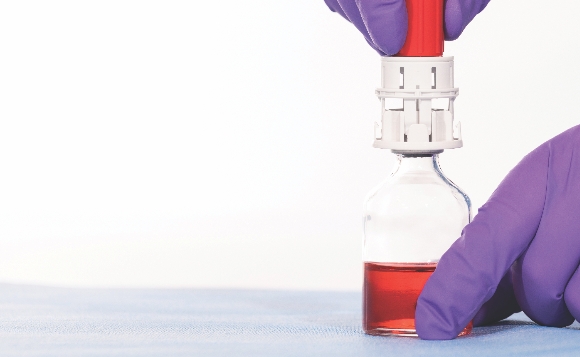
Vial adaptors are crucial in medical safety, significantly reducing needle-stick injuries and exposure to hazardous drugs. They provide a sealed environment, eliminating direct needle contact. Closed system vial adaptors protect healthcare workers from harmful leakage, drug aerosols, and spills.
Maintaining sterility during drug transfer is another area where vial adaptors offer significant advantages. Traditional needle and syringe methods are susceptible to environmental contamination during the transfer process. Vial adaptors, particularly those used in closed systems, provide a mechanical barrier that substantially reduces the risk of microbial contamination.
While traditional methods are familiar to most healthcare professionals, they come with inherent risks that require constant vigilance and adherence to updated safety protocols. Vial adaptors simplify the drug transfer process, and are often more intuitive and require less rigorous training. Utilizing a vial adaptor streamlines the drug transfer process by eliminating several steps required with outdated methods. The improved efficiency elevates the quality of care by freeing up time for interactions between healthcare providers and patients.
Stainless steel interaction with vial rubber stoppers may scrape the vial and leave foreign body particles in the drug vials which results in drug wastage and can be dangerous if administered to the patient. Many vial adaptors come with a plastic spike instead of a stainless steel needle to penetrate the vials and minimize coring.
One of the most significant technological advancements in vial adaptor design is the integration of these devices into automated compounding systems. This revolutionizes the efficiency and safety of drug preparation in pharmacies and healthcare facilities. Automated compounding systems, equipped with advanced robotics and precision mechanics, optimize the mixing, measuring, and transferring of medications. These systems virtually eliminate human error and the risk of contamination.
Automated systems employing consumable components like vial adaptors improve production throughput. Vial adaptors are more robust compared to the traditional needle and syringe and necessitate fewer delicate maneuvers, enabling faster compounding. This results in a higher number of drug preparations per hour compared to automation methods that rely solely on needles and syringes.
Enhanced ergonomics and user interface improvements are being explored to make vial adaptors even more user-friendly for healthcare providers and patients alike, especially in home healthcare settings. These enhancements aim to simplify the drug preparation and administration process, making it more intuitive and reducing the risk of errors.
Compatibility with a broader range of drug formulations and concentrations is another area of development. Engineers and pharmaceutical scientists are working together to design vial adaptors that can handle highly viscous or specialized medications, thus expanding the range of treatments that can benefit from the safety and efficiency offered by these devices.
Another potential improvement includes material innovation, where research is underway to identify biocompatible and more durable materials that also minimize environmental impact. Such materials promise to extend the lifespan of vial adaptors and reduce waste without compromising safety or efficacy.
In compliance with increasingly stringent regulatory standards, future developments in vial adaptors will likely emphasize further improvements in drug safety and worker protection. This includes advancements in sterile barrier technologies and mechanisms that prevent drug tampering or diversion. With ongoing research and development, vial adaptors are continuously evolving to meet the ever-changing demands of the healthcare industry.
When selecting a vial adaptor, there are several critical factors that healthcare facilities and professionals must consider to ensure the highest levels of safety, efficiency, and compatibility with their drug delivery systems. Here are some key aspects to keep in mind:
First and foremost, it is essential to ensure that the vial adaptor is compatible with both the vial and the syringe or connecting device being used. This includes considering the size, shape, and material of the vial stopper and the type of connection mechanism of the adaptor.
Ensure that the vial adaptor meets all relevant regulatory standards and guidelines for medical devices and drug delivery systems. Compliance with these standards is crucial for both safety and legal considerations.
The type of medication being transferred plays a significant role in adaptor selection. Some drugs may have specific handling requirements, such as protection from light or resistance to certain materials, that influence the choice of adaptor.
While not compromising on safety and efficiency, assess the cost-benefit of different vial adaptor systems. More expensive options may offer advanced features or greater safety, which could justify the investment by reducing healthcare costs in other areas, such as waste reduction and minimization of drug exposure incidents.
The complexity of the adaptor’s design can impact training requirements and the potential for errors during the transfer process. Opt for adaptors that are intuitive and straightforward to use, particularly in high-pressure environments.
Consider the environmental implications of the adaptor’s materials and disposal methods. Selecting adaptors made from recyclable or biodegradable materials can help reduce the environmental footprint of healthcare operations.
Evaluate the safety mechanisms integrated into the adaptor, such as those designed to prevent needle-stick injuries, exposure to hazardous drugs, and microbial contamination. Closed system drug transfer devices (CSTDs) that include vial adaptors with airtight and leak-proof properties are preferred for maintaining a high level of safety.
Vial adaptors play an indispensable role in enhancing medication safety throughout healthcare settings. By providing a secure link between medication vials and delivery systems, they significantly minimize the risk of microbial contamination. Beyond safety, vial adaptors contribute to the overall efficiency of drug administration processes while reducing waste. As healthcare professionals prioritize patient safety and regulatory compliance, vial adaptors an essential tool for enhancing medication safety and improving treatment outcomes for patients.
Vial adaptors deeply affect the well-being of patients and healthcare workers alike. Patients benefit from the assurance of receiving medication in a safe, uncontaminated form. This directly influences outcomes and fosters greater confidence in healthcare providers. Healthcare professionals enjoy the reassurance of using devices engineered to reduce occupational risks. With the adoption of safer and more efficient administration methods, they gain more time for meaningful interactions with their patients. In this way, vial adaptors positively impact patient and healthcare worker well-being, making them key components of modern drug delivery systems. With continuous advancements in material science, digital integration, and safety features, the future of vial adaptors is indeed promising for enhancing medication safety and improving patient outcomes.